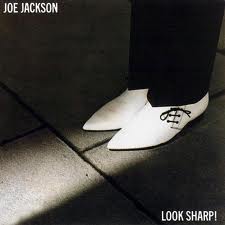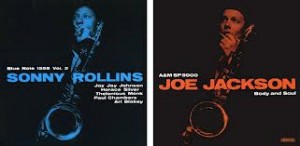Iconic.
Category Archives: attitude
Night Music: Iris Dement, “Let The Mystery Be”
If there is a song greater than Da Doo Ron Ron it is this one. #hyperbole
Iris and her friends picking probably don’t meet anyone’s primal threshold, but in a world where a significant proportion of the population believes humans at some point interacted with dinosaurs (and it wasn’t in the cartoon world of Land Before Time), the courage of someone deviating from the culture they continue to live in shouldn’t be undervalued.
That’s not primal in the blood sense, but it is courage of a sort Gang Green, I suspect, has never imagined.
RIP: Pete Seeger (1919-2014)
Folk great Pete Seeger passed away today, ideally peacefully, at the age of 94.
Seeger might not be thought of as a rocker, but he represented the spirit and attitude that any serious musician–or artist, for that matter–held and spoke, unashamedly about any cause.
Seeger was a founding member of the Weavers–who recorded probably had their biggest hit in the 50’s with Goodnight Irene by Lead Belly–some of whom were blacklisted during the McCarthy era for their beliefs.
However, in the 60’s, with the emergence of Bob Dyan, Joan Baez, and Peter, Paul, and Mary, Seeger found company and even a mentor-ship as his songs If I Had a Hammer, Waist Deep in the Big Muddy, and Turn! Turn! Turn! found their way to radio play.
Seeger, who played with Woody Guthrie as well as Lead Belly (with whom he co-wrote So Long, It’s Been Good to Know You along with fellow activist and musician, Lee Hays) was a pioneer in roots recording, and equally important, the Civil Rights Movement that grabbed hold in the 60’s, and is really still going on.
Seeger was a great gentleman by all accounts, and a man dedicated to humanity and equality and freedom for all human beings: something I like to think all artists, and especially rockers, strive for.
But, in thinking about Seeger, I could not help but think of the clip of him in Martin Scorsese’s fabulous American Masters documentary about Bob Dylan, No Direction Home.
Seeger is so sweet and perplexed and definite about wanting the cables to the electric guitars of Mike Bloomfield and Dylan at the Newport Folk Festival, in 1965, that it is funny to think how we all as human beings have our limits and adjustments.
For, Seeger was indeed a progressive politically. And, as a guy who quit the Weavers because they had signed an agreement to perform a cigarette jingle, he was certainly principled. But, I guess some progress, like cranked up Mike Bloomfield blues licks were hard to take for a middle-aged banjo player.
The world was a better place with, and because of Pete Seeger. And, it is sadder with him gone.
I did try to find the clip from No Direction Home, but couldn’t (although I highly recommend the movie and soundtrack) but, I did find this lovely clip of Seeger performing Dylan’s Forever Young.
And, well, remember, attitude does not have to be in-your-face Ted Nugent. A quiet message is always the most powerful, and Seeger was the purveyor of just that.
Super Bowl Chili Peppers
I’ve been amused at how many times I’ve seen Anthony Kiedis in his Off! hat in reference to the Peppers playing the Super Bowl. It would make it the best Super Bowl halftime show ever if he actually wore it there. Do you think they’d let him wear it if he wanted to? It would be nice to forcibly expose the Beyonce and Lorde and Justin Bieber and Imagine Dragons goofuses to some cool culture.
Man on the street: Thunders and Johansen.
I was looking for a David Johansen solo clip and found this bit of nonsense. I’m charmed because Johnny sounds just like he does on the records. All of them.
In Defense of Joe Jackson
Steve’s New Year’s article included a bunch of discs Mr. Moyer was considering blowing a bunch of holiday Amazon cash on.
 Among the coveted was Joe Jackson’s terrific 1979 Look Sharp, a solid and even pretty diverse debut released during the hey day of Punk and the New Wave.
Among the coveted was Joe Jackson’s terrific 1979 Look Sharp, a solid and even pretty diverse debut released during the hey day of Punk and the New Wave.
At first I dismissed Jackson as an Elvis Costello wanna be, but several songs from Look Sharp really nailed me. Is She Really Going Out With Him, Sunday Papers, and One More Time not to mention the great title cut made me buy the vinyl (I got the same issue as Peter, two 10″ discs) and the album was strong enough for me to easily take the plunge with Jackson’s second album, I’m The Man.
I felt Jackson’s second work was even stronger than his first, with the title track resting among my favorite Jackson tunes (it is also a song I played lead guitar on and sang with my first band, Mid Life Crisis). The album also had On Your Radio and the lovely and ironic It’s Different for Girls.
I bought Jackson’s next foray, Beat Crazy, and it did not do that much for me, but the eclectic musician and songwriter–who studied at Britain’s Royal Music Academy–followed that up with his Jumpin’ Jive Review, a wonderful homage to Cab Calloway and especially Louis Jordan.
Next for Jackson was Night and Day, a nod to pop and to Cole Porter, and an album that featured perhaps Jackson’s best known tune, Stepping Out and while there were still guitars and bass and 4/4 time in Jackson’s compositions, it was clear Jackson’s love for big bands and orchestrations was guiding his evolution as an artist.
By the way, Night and Day was again a very strong product, with diverse, tuneful, and thoughtfully constructed pop tunes. And, Stepping Out represented the first produced video by Jackson, who had eschewed the format that had become a staple in 1982, because he felt that video detracted from the music.
Jackson’s next work, Body and Soul again displayed the move towards a more refined  sound well as jazz in a work that lovingly replicates the cover art of the 1957 release by Sonny Rollins, Sonny Rollins, Vol. 2. Body and Soul has also proved to be my favorite Jackson disc, and the one that made my Top 50 (which now seems like a Top 75) for the site here.
sound well as jazz in a work that lovingly replicates the cover art of the 1957 release by Sonny Rollins, Sonny Rollins, Vol. 2. Body and Soul has also proved to be my favorite Jackson disc, and the one that made my Top 50 (which now seems like a Top 75) for the site here.
Jackson’s next work, Big World, sampled even further beats and rhythms of the world at large, while also displaying another aspect of the principled auteur, for though the album is a double disc, Jackson only felt he had enough quality material for three sides. So, side four is left intentionally blank.
From there Jackson generally moved more towards works that pushed towards fuller orchestrations, eventually delivering his Symphony #1 (1999) and though I stopped buying each of Jackson’s works, I did see Joe and the band on the heels of their Blaze of Glory tour in 1989, and they were beyond great. Tight, tuneful, and funny, with the goofy Jackson playing all kinds of instruments while he stalked around the stage, like a mad musical scientist dressed in a trench-coat, as his band simply smoked.
As noted, since then, Jackson has moved from the punky guitar driven sound that garnered notice, towards classical music (he has also done a bunch of soundtracks, including Mike’s Murder and Tucker), but comparing the literate and erudite Jackson with the likes of Billy Joel is not just wrong, it is criminal (sorry Gene).
One of the things I have noticed as the cluster of us contributing to the site have made our musical loves known, is some of us have a genre we love the most, or that we feel best represents what the site, as in Remnants of Rock, as opposed to country, or pop, or classical or salsa means, is that we have clear lines drawn about what qualifies.
And, while I understand this–and hell, guitar driven tunes are the ones that get me most as you can see by simply watching the I’m the Man vid–I think artists growing and pushing their vision is what keeps art, both theirs and ours, vital.
Joe Jackson is such an artist. Like Prince, or Joni Mitchell, or the Stones or Beatles, Neil Young, or even Dylan, Jackson has never been satisfied simply doing the same mishmash of tunes over and over again.
Rather he pushes and reinvents himself, and his work to keep both the music and himself growing, learning, and producing.
The results speak for themselves, whether he is your cup of Joe or not.
Happy Holidays Night Music: All the xmas tunes are posted and Pussy Riot is free.
A point they are deliriously using to show how screwed up Putin’s system is. I like to listen to music people went to jail for on Christmas.
Keep kicking Putin, Pussy Riot! And a happy new year!
Wham! Legendary Pop Band Celebrates Last Christmas
Here’s their version of Last Christmas. All six minutes and 44 seconds of it. You’ll get the idea in about 30 seconds evem if you’re not paying attention.
And here is the tune stretched out to 35 minutes long, by a guy named phone.o. Beautiful.
Thanks, Dangerous Minds
Night Music: The Pixies, “Dig for Fire,”and Frank Black “(I Want to Live on an) Abstract Plain”
I had to drive up to our house near Lake Tahoe on Wednesday for the simple task of installing our new DSL modem.
You see, even though the house is buried in the Tahoe National Forest, and we neither get–nor want–television or our cell phones to work, we do often have to work from the house. So, being able connect with the world is essential.
My whole time at the house took about 20 minutes for the install, but the drive is around three hours each way. But, since we do rent the house out, particularly to skiers this time of year, and we advertise the house has high-speed, well I had to make sure we delivered upon what was advertised.
I usually would have just streamed KTKE in Truckee (the town about ten miles from our house) but for some reason I just plugged in my iPhone, put it on shuffle, and let it go.
Most of the storage on my iPhone is gobbled up by music (7.2 GB as I write) so there is a pretty good array of stuff, and it was good fun listening to the digital DJ take a turn at spinning tracks, and as Pavlov (one of our dogs joined me for the trek) and I wound our way up in altitude, shuffle handed out a few songs by The Pixies, a band I really love a lot.
Among them was Dig For Fire from the band’s terrific Bossanova album. Such a great cut (I saw the band once, opening for U2 on the Achtung Baby tour).
Well, since I am a big Pixies fan, it presumes I am also a Frank Black (aka, Black Francis) fan as well, so I figured I would throw in a cut from his album Teenager of the Year, with Frank and his band The Catholics.
Night Music: Jack Kerouac and Steve Allen, “Charlie Parker”
Steve Allen was the host of the Tonight Show in the time of Kerouac’s popular fame, and Allen had him on the show many times. This isn’t great music. Allen was a good pianist and a prolific songwriter, but a lot of what he plays is, as Truman Capote said it, just typing.
Oops, Capote said that about Kerouac, whose literary tick was the long line, the repetitions, the onomatopoetic bursts. But in a way it also describes Allen’s voracious appetite for sounds and the way he chews them and offers them back.
When I was in high school I fell in love with Kerouac’s writing. Those long lines described the rhythm of my thoughts and the way some idea that felt really large would pull my tongue down with its gravity, til I couldn’t speak or could only speak really fast. When a boxed set of Kerouac’s readings with musicians came out, sometime in the 80s, I bought it and enjoyed it immensely. But by that time the romantic hold of Kerouac’s romantic tongue had lost its grip on me.
Tonight I’m near Lowell, Massachusetts, where Jack Kerouac grew up, and thinking about a friend who died yesterday of cancer at 59. Kerouac died when he was 56, and thoughts like this make me want to change the subject. Of course, Charlie Parker died when he was 35, so we all got a lot more of it than he did, poor Buddha.
Or did we?


